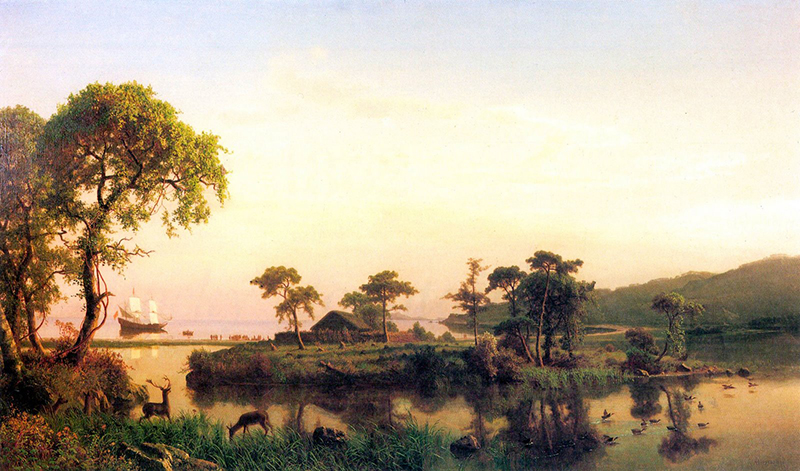In 1602, Captain Bartholemew Gosnold set sail from Falmouth, England on the barque Concord, making land on the Maine coast and searching southward along the coast to the island of Cuttyhunk, Massachusetts. A year later, Captain Martin Pring set out on a similar voyage aboard the pinnace Speedwell, sailing down the Maine and Massachusetts coast to Martha's Vineyard.
Pring took note of "tall okes, beeches, pine trees, firre trees, hasels, witchhasels and maples," but cared little for them. Neither Gosnold nor Pring took special note of the tall white pines that were to be the mainstay of the American economy in decades to come. Both captains were in search of the most precious commodity American had to offer: sassafras.
The crews of both ships remained on shore for several months. Gosnold intended to leave some of the crew behind as settlers, but the chosen crew members declined to stay and their nascent village was abandoned. Both captains returned to England with salt cod, beaver fur and other novelties, but the the holds of the ships were mostly filled with sassafras roots.
What was so important about sassafras? This is what Captain Pring said of sassafras: "a plant of sovereign virtue for the French Pox, and as some of late have learnedly written, good against the Plague and many other Maladies." The French Pox is what we now call syphilis.
In 1577, the Spanish physician Nicolas Menardes had written an influential book, translated into English as "Joyfull Newes Out of the Newe Founde World." Menardes extolled the medicinal virtues of many plants, but especially sassafras. Menardes regarded sassafras as useful for 'the griefes of the Stomache', 'the griefes of the stone, 'the evill of the Mother and windiness' and 'pestilent and corrupt airs."
Menardes provided a recipe for making strong tea from sassafras roots. Here is his recipe, which should be familiar to anyone who has made sassafras tea. "They took up by the roote of this Tree, and tooke a peece thereof, such as it seemed to them beste, thei cutte it small into verie thinne, and the little peeces, and cast them into water, at discretion, that whiche thei saw was needefull, little more or less, and thei sodde it the tyme that was needfull, little more or less, and thei sodde it the tyme that was needefull, for to remaine of good coulour and so thei dranke it, in the morning fastyng, and in the daie tyme, and at dinner and supper."
Menardes' book created demand for sassafras roots, especially as syphilis rampaged through the upper classes and aristocracy of Europe. Gosnold raised money to buy his ship and set sail. Pring was sent by Sir Walter Raleigh. Although both sailors spent time exploring the American coast, and Gosnold attempted to establish a colony, it was sassafras root that paid for their voyages. Because of these voyages, sassafras became America's first cash crop.
Both Gosnold and Pring went on to distinguished careers as explorers and settlers. But their first job as explorers was to dig up sassafras roots.
Sources:
Archers relation of Gosnold's Voyage, Mass. Hist. Coll 3d series, vol 8
Hakluyt, Richard. 1906. Early English and French Voyages: Chiefly from Hakluyt, 1534-1608. C. Scribner’s Sons.
Monardes, Nicolás. 1925. Joyfull Newes Out of the Newe Founde Worlde. Constable & Company, Limited.
Pring, Magazine of American History V. 8



